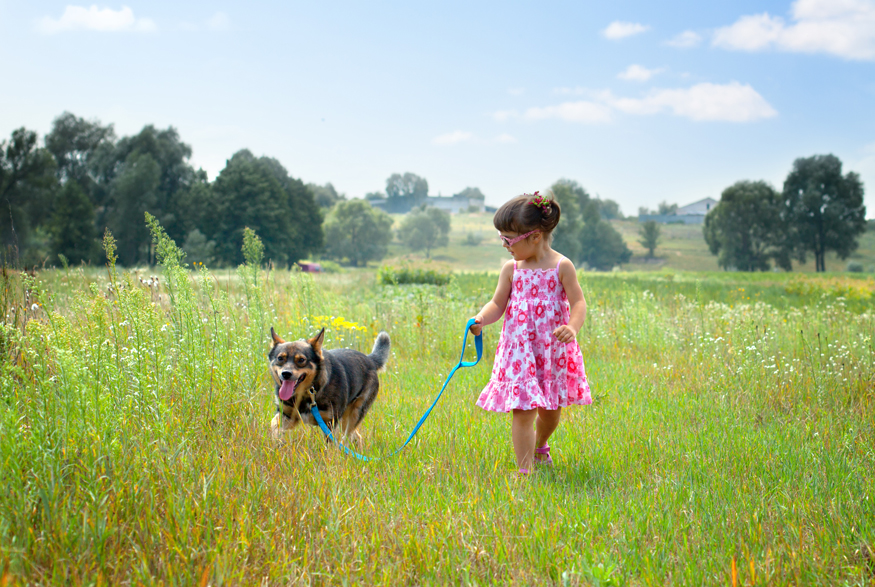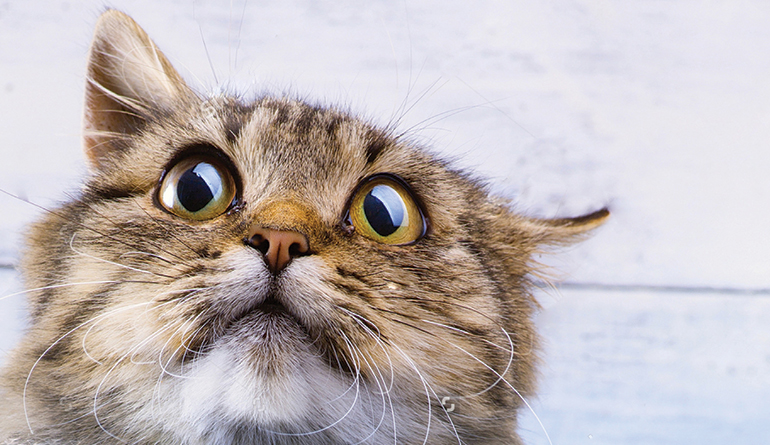Scaredy-Cat
“Kids see the similarities between their own doctor visits and their pets’,” Dr. Erin says. Allowing kids to help prepare a pet for a visit to the veterinarian creates a calm for everyone.
Imagine this: You’re day is disrupted as you are lured from your home by a friend thinking you are heading for a fun roadtrip. All of the sudden, you show up at a strange place filled with odd smells, weird people and you can even hear screaming in a nearby room. You aren’t sure why your friend you trust brought you to this place; can you trust them at all now?
Many pets go through this feeling when they are taken to the vet, and the anxiety they feel from this experience is shared by their human, too. We have a bond with our pets—and it has been proven that animals and humans will share emotions. One study by the Center for Disease Control and Prevention (CDC) says “social interaction of humans and dogs may also lead to increased oxytocin levels in both the human and the dog.” Oxytocin is a hormone related to bonding—so those emotions your children (and you!) feel about your pet are physiologically based. They’re real.
Trevor Ryan, a Veterinary Assistant at Mountain View Animal Hospital in Rapid City, agrees that there is a domino effect when clients (pet parents) are anxious.
“Pets, especially dogs, are in tune with our emotions,” Trevor explained. “So, if we are already stressed out or nervous, they are going to feel that way, too.”
To keep the anxiety to a minimum, Mountain View Animal Hospital and Canyon Lake Veterinary Clinic have implemented the Fear Free program into their routines—a certification process for animal professionals, which includes hours of classes and training. They learn techniques to help both pets and clients relax during the appointment and have a better experience in a sometimes difficult situation.
Fear Free’s goal is to “prevent, minimize, and eliminate fear, anxiety and stress…(while) protecting the pet physically and emotionally, and safeguarding the human-animal bond that’s forged through trust.” Of course, the vets themselves implement several shifts on their end, but families—parents and children, alike—can contribute to the success of their pets’ doctor visits, too.
“Pets and kids naturally go together,” said Dr. Erin Brown, one of the veterinarians at MVAH, “and we want to foster that bond—we want to make their visit a good experience.” How families work with their animals at home contributes greatly to the the stress levels they feel in their day-to-day lives, and at the vet’s office. Here’s what you can do, throughout your pet’s life, to help everyone remain “fear free.”
Training
Instead of aversive training—such as jerking and raising your voice—try using a reward-based training method, which results in a calmer, more confident pet.
Preparation
If your animal is small, and will be transported in a kennel—but you don’t usually use a kennel for your cat or dog—then put the kennel out a day or two in advance. This way, everyone becomes familiar with the transportation and will not associate it solely with a visit to the vet. Also, occasionally have the pet use the kennel, and move the kennel around with the pet inside. Even take a few “test drives,” so that car travel is not scary in and of itself.
Transport
Hold your carrier level—and avoid swinging it by the handle alongside you. This will make your cat or small dog a lot happier. No one wants to dance through an earthquake before being taken to the vet.
For placement in the car, try folding a towel on the seat to create a level surface, and then place the carrier on the towel. This allows your pet to keep its footing during the ride.
How kids can help
“Kids see the similarities between their doctor visits and their pets,” Dr. Brown said. “That pet is their best friend, their buddy.”
With this in mind, allowing kids to help prepare your pet for vet visits does more than foster responsibility; it creates calm around any doctor visit. Let kids play with an animal in and/or near the kennel, and, depending on age, either help or independently take your pet outside to play before its appointment. On the trip, let them sit by their buddy in the car, and let them come into the visit with you (when appropriate).


Having a pet who is less anxious for a vet visit makes for a more successful appointment—both in the hassle factor and the results. Just imagine the difference between blood tests for a jostled, uptight cat and a happy, mellow cat. Not to mention fewer scratches on your arms.
“The fear free program makes my job a little easier, even if we need to take a little more time (during the appointment),” explained Dr. Brown. “I get a better feel about what’s going on with the animal rather than all of the signs that can be hidden by fear, pain, and stress.”
The hassle that comes with taking your pet to their vet appointment can be more than what is welcomed. But, the Fear Free Program is making strides in ridding pet’s anxiety throughout the Black Hills, helping ease you and your family’s nerves a little more each time.
For more information on how your veterinarian can make subtle Fear Free changes in his or her office setting, or for more on what you can do to handle your pet with care, check out fearfreepets.com.
Written by Jenna Carda

